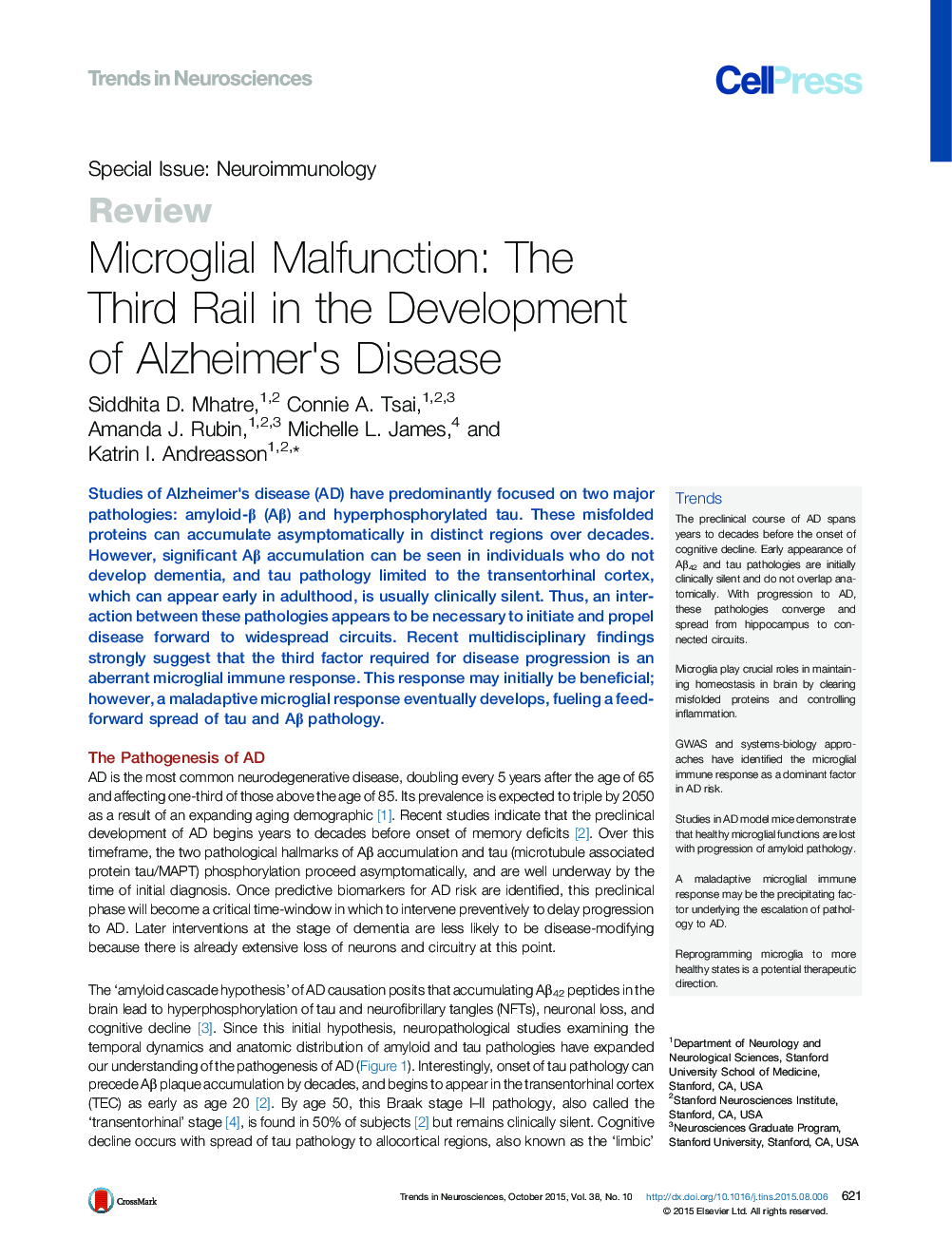| Article ID | Journal | Published Year | Pages | File Type |
|---|---|---|---|---|
| 4354109 | Trends in Neurosciences | 2015 | 16 Pages |
Studies of Alzheimer's disease (AD) have predominantly focused on two major pathologies: amyloid-β (Aβ) and hyperphosphorylated tau. These misfolded proteins can accumulate asymptomatically in distinct regions over decades. However, significant Aβ accumulation can be seen in individuals who do not develop dementia, and tau pathology limited to the transentorhinal cortex, which can appear early in adulthood, is usually clinically silent. Thus, an interaction between these pathologies appears to be necessary to initiate and propel disease forward to widespread circuits. Recent multidisciplinary findings strongly suggest that the third factor required for disease progression is an aberrant microglial immune response. This response may initially be beneficial; however, a maladaptive microglial response eventually develops, fueling a feed-forward spread of tau and Aβ pathology.
TrendsThe preclinical course of AD spans years to decades before the onset of cognitive decline. Early appearance of Aβ42 and tau pathologies are initially clinically silent and do not overlap anatomically. With progression to AD, these pathologies converge and spread from hippocampus to connected circuits.Microglia play crucial roles in maintaining homeostasis in brain by clearing misfolded proteins and controlling inflammation.GWAS and systems-biology approaches have identified the microglial immune response as a dominant factor in AD risk.Studies in AD model mice demonstrate that healthy microglial functions are lost with progression of amyloid pathology.A maladaptive microglial immune response may be the precipitating factor underlying the escalation of pathology to AD.Reprogramming microglia to more healthy states is a potential therapeutic direction.
